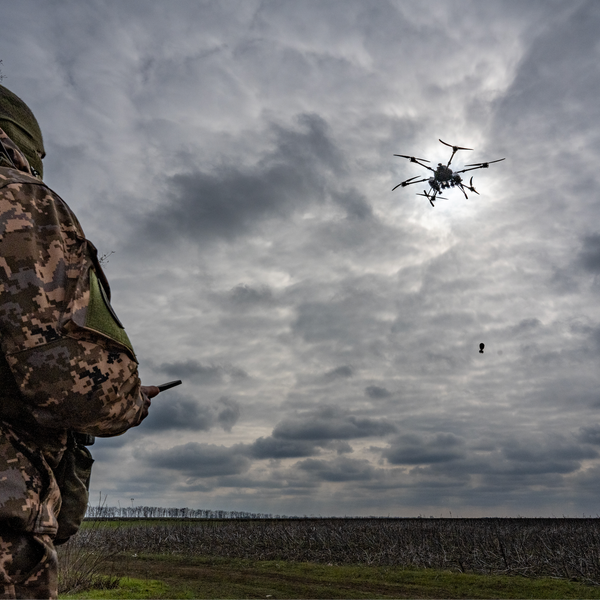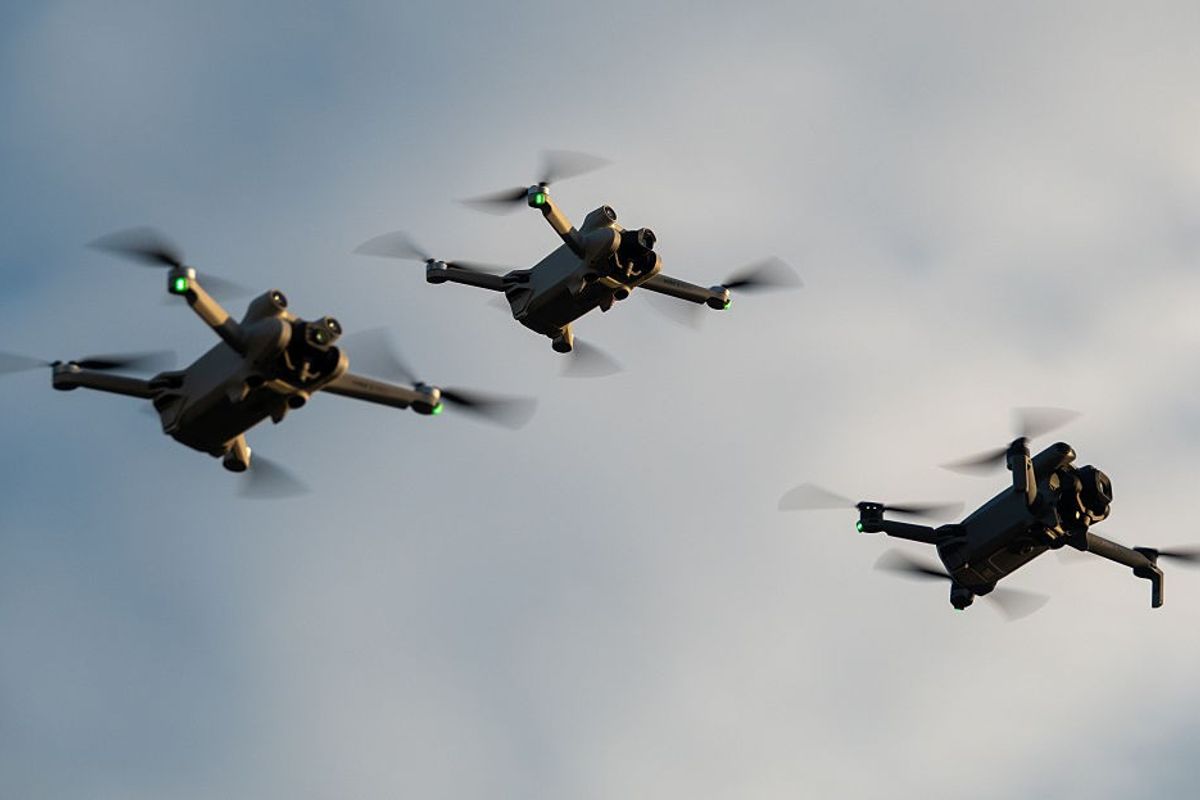OPINION — “The Medium Unmanned Surface Vessel (MUSV) is an affordable and flexible vessel capable of filling multiple roles within the [U.S. Navy] fleet. The low-cost, non-exquisite, mass-producible characteristics of MUSV will allow for the rapid deployment to address immediate fleet needs, provide an adaptable, attritable [multi-use and loseable] vessel, and expand accessibility for industry partners that would otherwise be unable to compete in the construction of larger vessels.”
That was Adm. Daryl L. Caudle, in a written answer to questions from members and staff of the Senate Armed Services Committee prior to his appearance July 24 for his confirmation hearing to become Chief of Naval Operations (CNO). (Caudle was confirmed as CNO on July 31.)
“The Large Unmanned Surface Vessel was an exquisite single-mission vessel, with capabilities that made it mission-restricted and unaffordable,” Caudle said, but he added, “My vision and goal will be to ensure unmanned systems seamlessly and affordably integrate with manned platforms.”
Last Monday, Caudle’s discussion of unmanned vessels was backed up by the Navy’s announcement of a new Modular Attack Surface Craft (MASC) program, which is seeking other smaller types of unmanned surface vessels than MUSVs, but still capable of carrying large payloads — including missiles — thousands of miles in support of manned warships.
“MASC seeks to leverage cutting-edge technologies and modular design principles to create adaptable and resilient solutions that can effectively counter evolving threats,” last Monday’s notice said, adding, “We invite interested parties with expertise in innovative solutions to complex problems, vessel construction, autonomy, perception systems and general maritime experience to participate in this exciting opportunity.”
I will discuss more details of the MUSV and MASC programs below, but first there is a history of the Navy’s move to unmanned surface vessels.
Back in February 2022, then-CNO Admiral Michael Gilday announced the Navy’s goal was to grow to 500 ships, but only 350 were to be crewed ships – the remaining 150 were to be unmanned vessels. Dubbed the “hybrid fleet,” the initiative was picked up and emphasized by former-CNO Admiral Lisa Franchetti, in her September 2024 Navigation Plan for America’s Warfighting Navy.
Franchetti, who was fired last February by Defense Secretary Pete Hegseth, noted the changing nature of war, the imperative to adopt robotic and autonomous technology, and the reach and lethality of the fleet as key guide rails for the strategy. Franchetti’s goal was to get more robotic systems into operational settings in the next three years, seeking help from commercial robotic and autonomous systems for sea-denial missions.
Sign up for the Cyber Initiatives Group Sunday newsletter, delivering expert-level insights on the cyber and tech stories of the day – directly to your inbox. Sign up for the CIG newsletter today.
Caudle made clear to the Senators that he would be executing Franchetti’s Navigation Plan through “implementing [its] Project 33 and expanding the Navy’s contribution to the Joint warfighting ecosystem.”
Among Project 33 goals, Caudle said, are the aims to “ready the force by eliminating ship, submarine, and aircraft maintenance delays; scale robotic and autonomous systems to integrate more platforms at speed; and create the command centers our fleets need to win on a distributed battlefield.”
It should be noted that the Navy lagged in developing unmanned surface vessels, while earlier it had moved ahead with unmanned air and unmanned underwater systems.
The Navy’s MQ-4C Triton unmanned aircraft has been in service since 2023 and was developed out of the Air Force’s Global Hawk system. A high altitude, long endurance maritime aircraft, it operates above 50,000 feet, for 24-plus hours with a range of 7,400 nautical miles.
The newer unmanned MQ-25 aircraft is being developed to operate from Navy carriers and provide aerial refueling to the carrier air wing.
Caudle told the Senators, “I envision an enhanced and seamless team of manned and unmanned combat aircraft working together as a force multiplier - extending the reach, lethality, and speed of action of our manned warfighters. It is too early to predict the exact mix of manned and unmanned aircraft.”
Since the 1990s, the Navy has used unmanned underwater vehicles (UUVs) operating from both submarines and surface ships to conduct intelligence preparation of the undersea battlespace. One variant, the Razorback MK19, launched and recovered from the shore or a ship’s deck, reaches areas too deep, too shallow, or too dangerous for submarine operations. The Razorback MK19 variant procurement began in FY 2017 and Fleet operational deployments began in FY 2021.
The Navy’s fiscal year 2026 budget, now before Congress, showed the service’s early bias with unmanned surface vessels at $203 million funded at a much lower level than the $668 million for unmanned underwater systems and $715 million for unmanned air systems.
Even though Ukraine does not have much in the way of a navy, it has scored several victories against the Russian military by using USVs, providing lessons to the U.S. Navy about the future of naval warfare.
The Cipher Brief brings expert-level context to national and global security stories. It’s never been more important to understand what’s happening in the world. Upgrade your access to exclusive content by becoming a subscriber.
Overall, Caudle said, “Unmanned systems will be operated from deployed naval platforms or from ashore operational centers as needed, reducing risk to the U.S. warfighters and enhancing fleet lethality across all mission sets. By 2027, Caudle added, “We will achieve and sustain an 80 percent combat surge ready posture for ships, submarines and aircraft.”
As for the MUSVs, the Navy in 2023 defined them as being less than 200 feet long with displacements under 500 tons, roughly the size of a patrol craft. The initial focus for MUSVs was to be Intelligence, Surveillance, Reconnaissance, and Targeting (ISR&T), Counter-ISR&T, and Information Operations (IO) missions.
They were envisioned as low-cost, high-endurance, reconfigurable vessels capable of carrying various payloads. MUSVs could be sent independently to perform the ISR mission, or it could be sent to launch smaller unmanned surface vessels for ISR or even uncrewed aerial vehicles to conduct overhead ISR.
In 2023, L3Harris Technologies developed and delivered to the Navy Mariner, a MUSV prototype which now is part of Navy's Unmanned Surface Vessel Division One (USVDIVONE), based in San Diego, where it is used for further testing and development of USV tactics and procedures.
One thing Caudle failed to mention in his discussion of USVs is that there is one category that has been accepted for service by the Navy, a historic milestone in the transition to autonomous maritime operations.
Four months ago, on April 4, Bollinger Shipyards of Lockport delivered to the Navy three Mine Countermeasures Unmanned Surface Vessels (MCM USVs), that had been contracted for back in 2022. The vessels are the Navy’s first full-rate production, non-prototype, unmanned surface ships under a formal program of record. Bollinger has been contracted to build nine more under the program.
Up to now, these missions were handled solely by Mine Countermeasure vessels with a crew of more than 80, and MH-53E minesweeper helicopters. Both are being phased out. The autonomous nature of the MCM USVs reduces risk to sailors by removing the need for personnel onboard during missions in potentially mined waters.
On July 31, Capt. Matthew Lewis, manager of the Unmanned Maritime Systems program office, said the new MASC “program represents a significant step forward in the Navy's pursuit of a robust and adaptable unmanned surface fleet…This innovative approach to acquisition, coupled with a modular design philosophy, will provide the fleet with cost-effective and highly capable platforms to address the challenges of the 21st-century maritime environment.”
MASC will combine essential capabilities from the Navy’s older LUSV and MUSV programs into a flexible, modular platform designed for multi-mission operations and warfighting capabilities including anti-surface warfare, strike warfare and information operations in addition to future embarked mission areas.
The MASC solicitation invited companies to submit white papers or collections of slides by August 11, detailing their capabilities and proposed solutions. Using an innovative acquisition strategy, the Navy hopes to streamline development and encourage proposals using commercial off-the-shelf technologies.
I think we still need to know more about this new, unmanned Navy.
Opinions expressed are those of the author and do not represent the views or opinions of The Cipher Brief.
The Cipher Brief is committed to publishing a range of perspectives on national security issues submitted by deeply experienced national security professionals.
Have a perspective to share based on your experience in the national security field? Send it to Editor@thecipherbrief.com for publication consideration.
Read more expert-driven national security insights, perspective and analysis in The Cipher Brief















